8 Products And Features Unveiled At AWS Summit 2017

AWS Summit Product Roundup
Amazon's series of Summit events are primarily about educating partners and customers to use the advanced features of the world's largest public cloud.
But whenever Amazon CTO Werner Vogels takes a stage, as he did to deliver the keynote at the recent AWS Summit in San Francisco, you know he's not going to resist revealing some cool features to the AWS community.
Vogels didn't disappoint in San Francisco, showing off a number of new, or newly available, capabilities of AWS cloud.
"Over past few years, cloud has become the new normal," said the CTO. "The default environment to build apps on."
With all the new features, partners feel like James Bond, Vogels said, with Amazon, giving them "all these fancy tools," filling the role of Bond's innovative quartermaster Q.
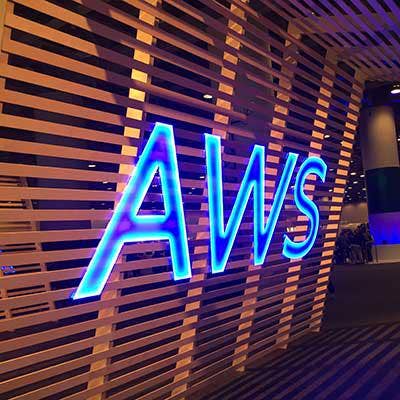
SaaS Contracts
AWS ISV partners selling software subscriptions through the AWS Marketplace previously had to enact any long-term contracts on their own. But a new contract framework aims to make delivery of Software-as-a-Service from Amazon's partners more flexible.
Customers subscribing to those third-party services through the marketplace, and channel partners managing delivery of those services, will for the first time have the option, through SaaS Contracts, of expanding subscriptions to pre-negotiated contracts of one, two or three years. The AWS service offers APIs the software vendors can use to easily on board and set up customers in those contracts, Vogels said.
"It’s going to be a whole lot easier for any SaaS provider hosted in AWS to be able to provide their subscription-based services to the world," Jarrod Levitan, chief cloud officer at TriNimbus, an AWS partner based in Vancouver, said of the new service.
Doug Merritt, CEO of machine analytics vendor Splunk, a popular product on the marketplace, when invited on stage during Vogel's keynote told attendees: "Our customers want to purchase software with the least amount of friction possible. The new AWS Marketplace SaaS Contracts API enables an automated, online purchasing process, giving enterprise customers a fast and flexible way to buy and use Splunk."

CodeStar
Vogels unveiled CodeStar, an integrated DevOps-style environment that simplifies the development process with project templates and support for different programming languages and target environments. CodeStar lets users start building applications right away by setting up team access parameters, configuring a continuous integration pipeline, and offering monitoring and management tools.
Software engineers can use CodeStar to stitch together a pipeline that allows them to develop, deploy and manage their code in the cloud, he said.
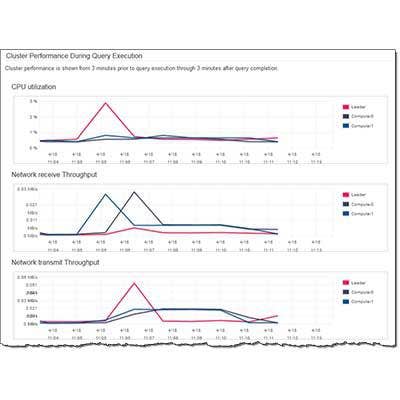
Redshift Spectrum
Sometimes enterprises want to analyze their data without moving it into the AWS Redshift database. Now they can.
Redshift Spectrum, released in preview, extends the power of Redshift's query engine to query exabytes of unstructured data sitting in basic S3 storage. That gives customers the ability to create applications that use the same query language to access different, often less-critical data sets, Vogels said.
It's an appealing product to large data lake users, both when considering speed and costs, said Jarrod Levitan, chief cloud officer of TriNimbus, an AWS partner based in Vancouver, Canada.
Redshift Spectrum "offers a pure pay-for-usage model, separating compute from storage," Levitan said. "If you architect your data warehouse well, you could save a lot on Redshift costs."
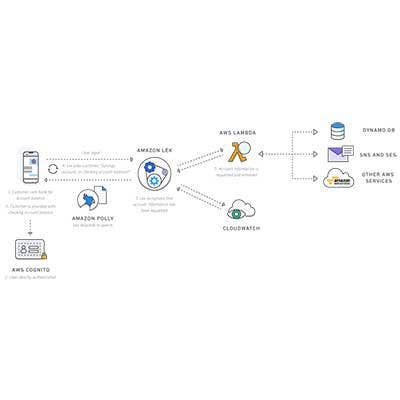
Amazon Lex
Lex is an artificial intelligence engine that delivers speech recognition and natural language comprehension capabilities. It's most prominently known for being "inside" the Amazon's Alexa (A-lex-a) personal assistant that brings to life the Echo line of home-automation products.
With that voice and text recognition service now generally available, developers can build applications that offer sophisticated, conversational interfaces and launch a new breed of ever-more intelligent chat bots.
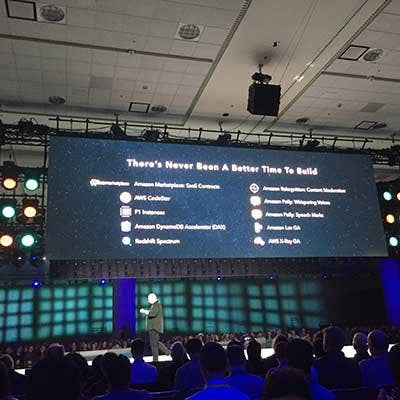
X-Ray
Serverless computing is one of AWS' main areas of development, Vogels told attendees.
Amazon is focused on removing "all this notion of servers," Vogels said, so users "no longer need to think about servers, or managing any types of instances."
AWS leaders see a game-changing shift away from provisioning virtual machine instances, to just running code that automatically scales, he said. AWS has been building up a set of tools in that category since the very beginning, with the Lambda service a centerpiece, offering serverless compute functions that can speed development time and reduce costs.
At Summit, Vogels announced the GA release for X-Ray, a tool for tracing and debugging Lambda functions across a complex deployment.
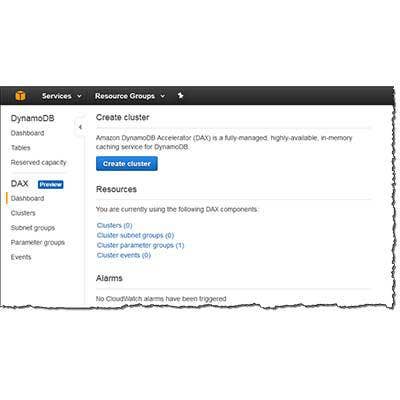
DynamoDB Accelerator
Lots of Amazon customers, especially those creating products in areas like gaming or ad tech, need to speed database performance by keeping frequently accessed data in cache.
With DynamoDB Accelerator, Amazon delivers to them a one-click deployment mechanism to do just that. The product, launched in preview mode, delivers microsecond access to data stored in DynamoDB, Amazon's NoSQL database service.
With Accelerator, "you don’t need to rewrite apps to get these response times," Vogels told attendees.
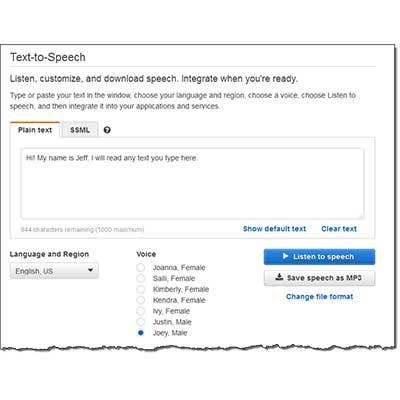
Amazon Polly Whispers
Amazon Polly is a powerful text-to-speech service powered by a deep learning engine. But while Polly can say just about anything, sometimes she needs to say it a little bit quieter.
Vogels revealed an upgrade that imbues Polly with her whisper voice. Another upgrade makes it possible to use punctuation marks to sync speech movements of an avatar to the actual syllables of Polly's utterances.
Both features were demonstrated during Vogel's keynote by a slightly eerie avatar—a computer-rendered woman with flowing black hair—sharing a tale with the audience that required some whispering at a critical moment.

Amazon Rekognition Enforces Decency
Amazon Rekognition, a service developed by Amazon's Computer Vision team and powered by a deep learning engine, can scan large numbers of images and identify their content -- everything from estimating the age of people in photographs, to declaring what they're wearing, what kind of locations they're at, and even their emotional sentiments.
But with so many racy images out there, Amazon decided Rekognition needed a more parental touch.
A new feature, Amazon Rekognition Image Moderation, can evaluate content for appropriateness, flagging images across several levels of decency infractions.
The example Vogels showed at Summit was a slightly racy photo of a handsome man standing in the ocean in nothing but his swim trunks. Nothing too explicit, but Rekognition noted the image could be found suggestive.